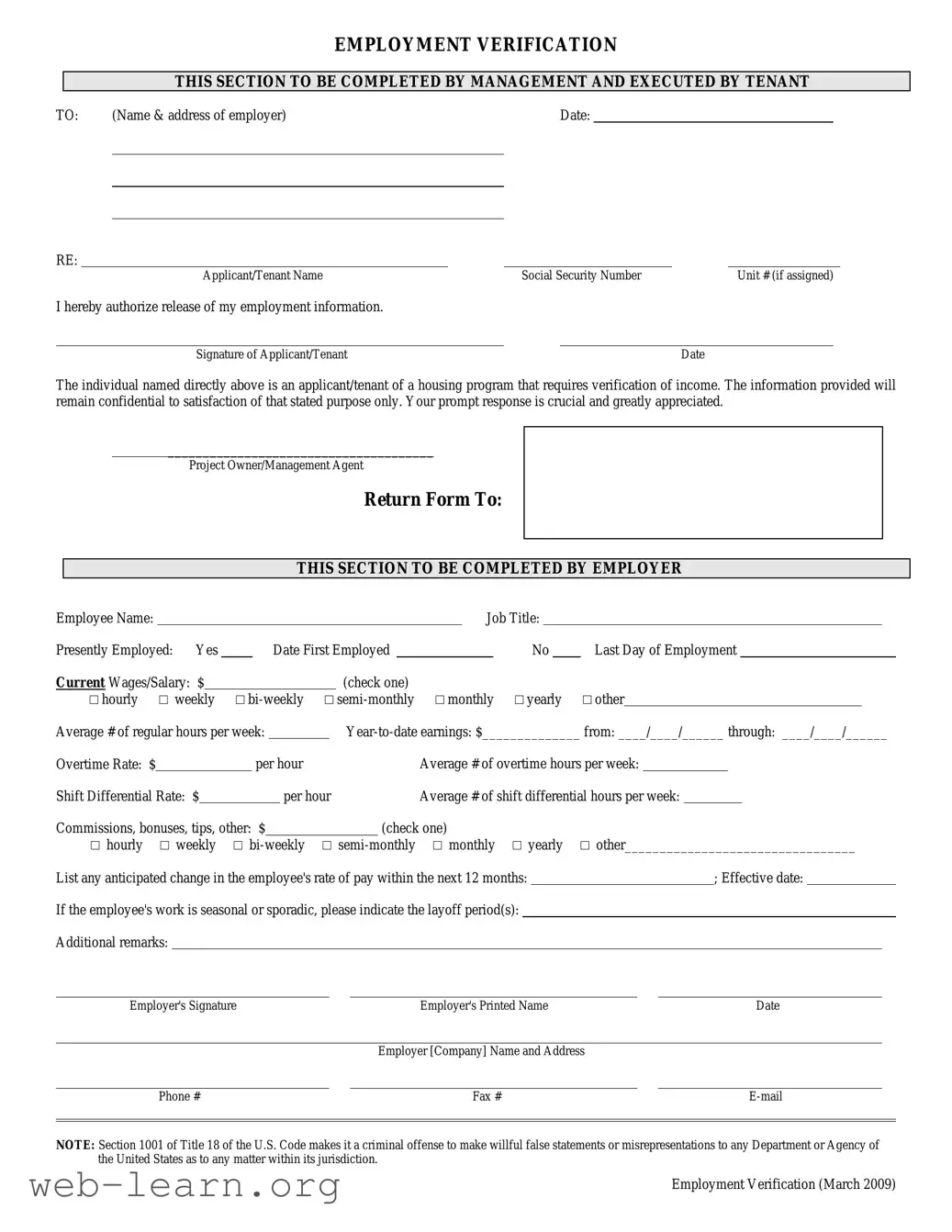Completing an employment verification form can seem straightforward, but many individuals overlook critical details. One common mistake is failing to provide accurate personal information. This can include misspelled names or incorrect Social Security numbers. When the information provided does not match official records, it can lead to unnecessary delays or even a rejection of the application.
Another frequent error is neglecting to fill out all required sections of the form. Some individuals may skip over parts they believe are not essential, such as previous employment dates or job titles. However, complete information is crucial for employers to verify employment history adequately. Leaving any section blank can raise red flags and may affect decision-making.
People often misinterpret the instructions on the form. This misunderstanding can result in either providing too much information or not enough. For instance, some may include irrelevant details or personal opinions about past jobs instead of focusing solely on the factual employment data requested.
In addition to misreading the instructions, failing to double-check for errors can be detrimental. Typos, numerical mistakes, or inconsistent information can undermine the credibility of the form. A careful review before submission can help avoid these potentially damaging oversights.
Another common misstep is incorrectly citing employment dates. Many individuals misremember the start and end dates of their previous positions, leading to inconsistencies upon verification. Such discrepancies can raise questions about the reliability of the information provided, which could ultimately impact the applicant's prospects.
Moreover, neglecting to provide adequate contact information for previous employers can hinder the verification process. If the employer cannot reach past employers to confirm details, it could stall or derail the hiring process entirely. It is important to ensure that the contact numbers and job titles are accurate and up-to-date.
Lastly, one of the more severe blunders is providing false information intentionally. Misrepresenting job duties, salary, or duration of employment can lead to serious consequences, including rescinded job offers or termination if discovered after hiring. Honesty during the employment verification process is fundamental for building trust and credibility in any professional environment.

